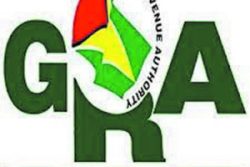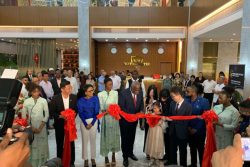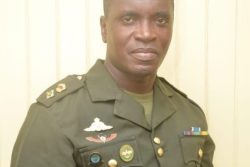It would be naïve, arguably downright guileless to pretend that Donald Trump’s return to the presidency of the United States will have no significant bearing on Washington’s relationship(s) with CARICOM, a truism that has already been made manifest by the early soundings that are deriving from the new administration.
Indeed, one might argue that the now twice elected President of the United States has what one might call the ‘leftovers’ from his previous term in office, if you will. Not least among these is Washington’s earlier protracted confrontation with the Maduro administration in Venezuela that severely hobbled (this may well be an acute understatement) Venezuela’s oil-driven economy as well as the global oil market to a significant extent. Venezuela apart, there was, of course, the ongoing ideological ‘battle’ with Cuba which, over time, had metamorphosed into a full-blown economic war with Havana. Since then, of course, Washington and Havana have had their subsequent ‘confrontations’ arising out of what the US regarded as the dubious circumstances under which Mr. Maduro was returned to office.
If these were not the only issues that characterized the relationship between President Trump’s earlier administration and the rest of the hemisphere they were certainly among the standout ones. One recalls too the reverberations that arose out of the Biden administration’s US/Caribbean relations (these may properly be termed ‘awkward moments’) that had arisen out of attempts to ‘kick off’ the Dragon Gas Field project, regarded by Caracas and Port-of-Spain as something of a ‘lifeline’ for the two countries. If it is still probably too early to determine how these scenarios will ‘pan out’ when the Trump administration’s relations with the hemisphere assumes, a more definite ’shape’ what, seemingly, is already clear is that significant elements of what obtained during President Biden’s term in office will likely be altered (indeed this already appears to be in the process of being altered) in ways that could (will?) significantly re-shape relations between Washington and the region as a whole.
All of this, of course, is unfolding at a time when some elements of hemispheric politics have changed, pointedly and for the worse. Here one might point, first, to the decided worsening of relations between Guyana and Venezuela as manifested in the latter’s recent building of a bridge over the Cuyuni River (a development that has triggered what, over time, has become a familiar pattern of a patter of diplomatic feet by the Guyana Government) a move that is widely regarded as Maduro’s ‘doubling down’ on Caracas’ Essequibo-is-ours mantra. A not altogether dissimilar situation obtains in the matter of the Dragon Gas Field project between Venezuela and Trinidad and Tobago, an agreement that may now have become hostage to the disposition of the new Trump administration in Washington.
The fact that considerations that have a profound bearing on the well-being of the region are still (in this day and age) influenced by the dispositions of the tenants in the White House serves as a reminder of the reality that however much we sometimes pretend to the contrary, there is a sense in which the Caribbean continues to be altogether exposed to what one might call an enduring Cold War ‘drizzle’ the intensity of which is determined by considerations over which, however much we pretend to the contrary, still obtain. As has always been the Caribbean’s ‘lot in life’ in a ‘big power-dominated global community’ (with surrogates in the region) we, the Caribbean, that is, would appear to have to sit and wait until the new Trump administration crystalizes its policy towards the region before other significant aspects of ‘Trumpism’ Part Two become clearer.
One consideration that arises here has to do with just how soon a Trump White House will ‘get around’ to giving its full attention to US-Caribbean relations. On the one hand it might be argued that Washington’s strategic interest in the hemisphere would have become focused by its mindfulness of Guyana’s new-found petro significance as well as the strategic significance of what now appears to have been the ‘green-lighting of the Dragon Gas Field project between CARICOM member state Trinidad and Tobago and Venezuela. Here we should remind ourselves that regime change in Venezuela is still (or at least so it seems), a US foreign policy objective. On the other hand it can hardly be argued that Washington’s strategic interests in the hemisphere could possibly outweigh its wider global concerns. Here the ongoing and increasingly worrying Ukraine-Russia war and the ongoing confrontation in the Middle East continue to be standout thorns in the flesh of ‘big power’ relations.
Whichever way it goes it would appear that in the period ahead the Caribbean, not least Guyana, – largely on account of its now incrementally enhanced petro significance – would have earned itself a much more generous measure of Washing-ton’s attention, going forward. Whether this will redound to the country’s benefit, or otherwise, we will have to wait and see.







